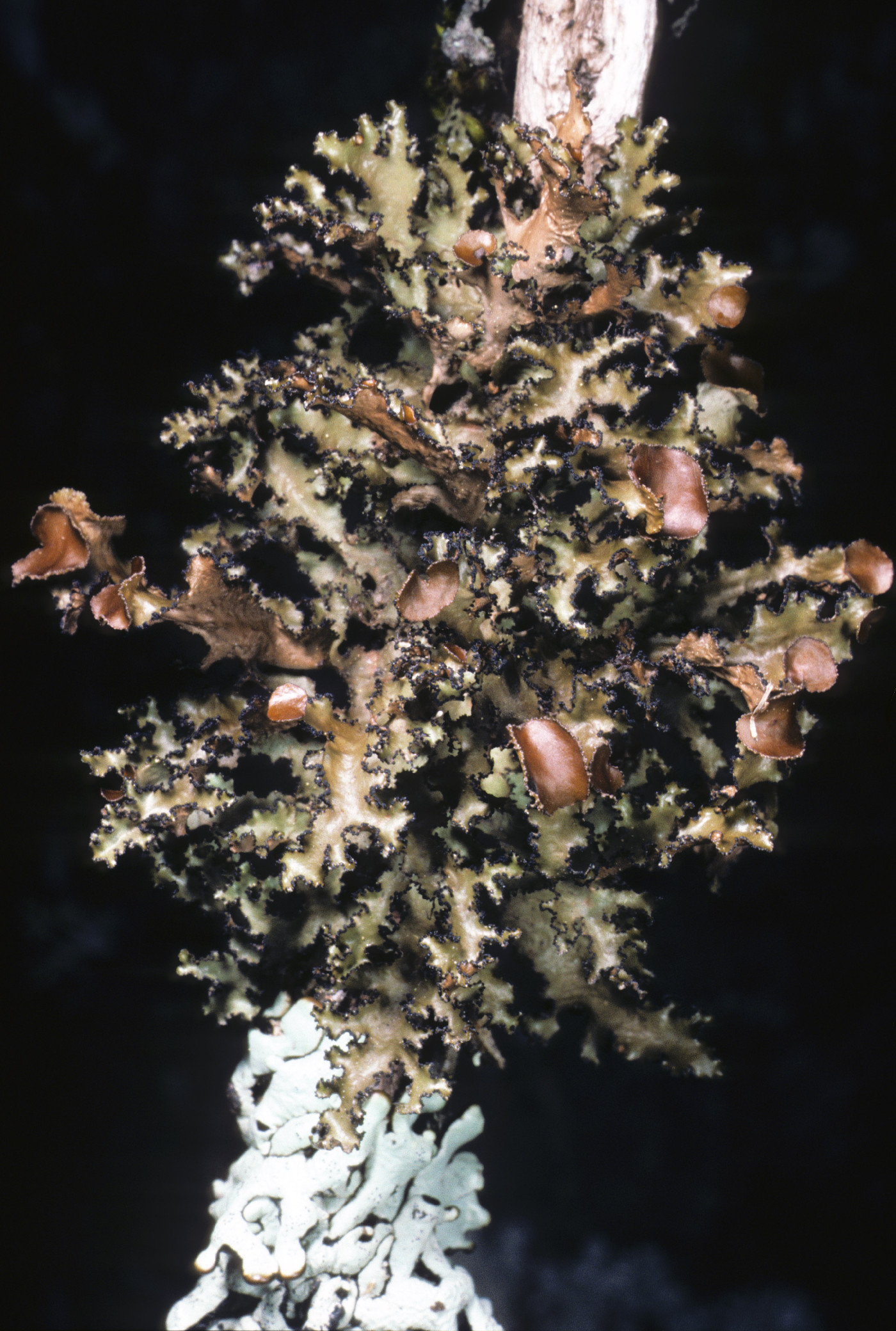
Consortium of Lichen Herbaria
- building a Global Consortium of Bryophytes and Lichens as keystones of cryptobiotic communities -
- Home
- Search
- Images
- Species Checklists
- US States: O-Z >
- US National Parks
- Central America
- South America
- US National Parks
- Southern Subpolar Region
|
Family: Parmeliaceae |
Nash, T.H., Ryan, B.D., Gries, C., Bungartz, F., (eds.) 2004. Lichen Flora of the Greater Sonoran Desert Region. Vol 2. Thallus: foliose or sometimes erect-subfruticose, small to medium sized, moderately or more commonly loosely attached, lobate lobes: elongate, irregular to somewhat more rounded upper surface: pale brown to dark brown or olive-brown upper cortex: paraplectenchymatous medulla: white lower cortex: paraplectenchymatous lower surface: usually tan or pale brown, sometimes dark brown in older parts, sparsely to moderately rhizinate; rhizines: usually concolorous with the lower surface, simple or sparsely furcate Apothecia: with thalline exciple asci: cylindrical and 8-spored ascospores: simple, hyaline, globose to subglobose, 5-8 x 5-7 µm Pycnidia: blackened, strongly emergent (usually as tall or taller than they are broad) conidia: bifusiform, 4.5-6 x 1 µm Secondary metabolites: fatty acids, depsides or depsidones Geography: primarily temperate or boreal, North America, Europe, Asia, Africa and South America Substrate: bark, wood, rock, soil or mosses. |
Powered by Symbiota









